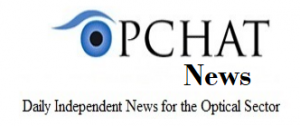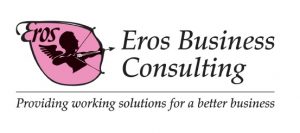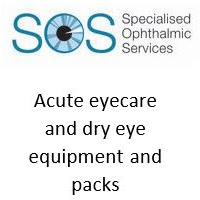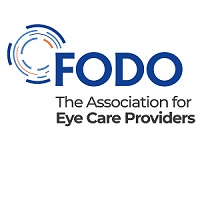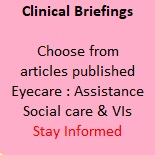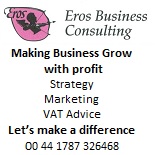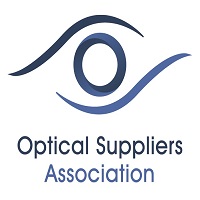The Advantages of Using Stock Modules to improve VAT position
Bob Hutchinson Many practitioners see the use of a stock module as an additional luxury which adds time with little benefit to the practice. This is because they have never been shown how stock knowledge can increase profitability, help with promotions, ensure gross profitability levels are retained or maximised and even improve your VAT apportionment agreement or reduce sales tax payments. There are two business briefings that will demonstrate the advantages of stock control. In this we will discuss how better stock information and stock history can assist in an improved vat position. You can read a second briefing on how a stock module can improve profitability and increase footfall later. This briefing concerns improving your VAT attribution. VAT and the cost apportionment treatment of spectacles and contact lenses puts stock history and control in centre stage. Practices appear to be running with three or four types of apportionment agreements. Those with recently agreed percentages with HMRC have calculated the average cost of frames and lenses (net cost price) and after applying VAT have apportioned the sum of these against the cost of providing the dispensing service. Without a stock module showing stock sales history, calculating the actual cost of frame sold can be very time consuming. (This is well known to the writer who has had to spend a great deal of time ferreting out this information when not available for clients.) There are other ways of finding out frame prices. One method is to average the purchasing costs over a year but these provide false figures with higher cost prices of frames than the actual sale generally because lower cost items are sold more often in a practice. You also need to find out how many frames were dispensed and how many dispensings were lens only which is also time consuming, but a very useful KPI when measuring dispensing activity. Having this information is invaluable for the business as we will discuss later, but it’s a must when agreeing a Full Cost Apportionment agreement with HMRC which can save £1000’s each year of net profit in a profitable business. (Many of the writer’s clients have saved in excess of £6000 per year in overpaid VAT and some have been rewarded with an overpaid past payment refund of over £10,000). There is also a group of practitioners still using old “cost plus” agreements which are in the most part considered no longer valid although we still find the odd renegade officer applying them with usually far too high a percentage. These agreements, often enforced except in rare occasions need rescinding but if “cost plus” is to remain in use you must have a simple sales reporting system for frames and lenses, and again especially in frames. This is because cost plus asks you to total the net cost of all frames and lenses dispensed in a period and add an artificial percentage which creates an artificial selling price to which in most cases the VAT rate is added (but in rare cases the VAT is regarded as inclusive). Many practitioners without a stock module basically add up all frame and lens purchases from invoices and apply the cost plus. But of course many of those frame purchases will still be sitting on the frame bars or under the counter and yet VAT will have been attributed on them as a sale even when they remain unsold. Often retrospective discounts are applied later by manufacturers which had they been accounted for within a stock module would have reduced the VAT element. So it is evident that a stock module for many will provide instant relief in VAT payments, which will continue year on year and easily pay for itself and the small additional work in setting up a stock file, but what else can it do? In conclusion stock control modules are not a luxury but a vital part of a business’s armoury in ensuring for a profitable business. Read on for better stock control analysis in this second PHN Business Briefing now Keeping Your Stock Levels to the Minimum Required to Create Customer InterestBob Hutchinson, Eros Business Consulting This briefing follows on from our briefing above and investigating better figures to improve your cost apportionment percentage for VAT attribution. Also to allow better categorisation to ensure the correct vat is being applied to each product type sold. But in this briefing we are presenting ways that a stock module can be used to improve gross profits, practice security and create better stock mixes to increase footfall. Having your stock on file provides instant information on stock values so you can reduce the stock level to the minimum level in order to provide the necessary customer interest and best stock turnover allowing your stock to always look fresh. Removing old stock which has been on the bars for more than a year by repricing for promotions not only clears old stock but allows you to depreciate stock values and save on corporate or income tax. Many practices forget to re-order sold stock items that might well have been the season’s best repeat sellers, so their stock mix becomes skued towards poorer selling frames. Stock Mix Control (SMC) is the key to the most successful retail businesses as sales follow your stock merchandising. So why not review your frame sales by gender, price and material then you can then look at how your stock mix suits your sales history and customers’ selection. By adjusting your stock mix to suit your customer’s sales type, firstly you can affect their selection by having a greater selection in the frame types they like, now add a higher percentage increase in retail price mark to this “hot” selection and you will find that your clientele will follow your stock mix, accept the price range and your average sales will be improved. Sounds magical and it is. Looking at historical sales with net costs and retail sales exc. of VAT allows you to exactly measure gross profitability on individual frames and frame types and downloading this information to a spreadsheet allows you to play “if and what” planning for future price increases by virtually adjusting mark ups on different frame sectors using the numbers sold over a period for each frame or frame type. This will show how sliding scale price changes will affect future GP over the whole frame stock. This is a powerful tool when using stock mix decisions and price mark up allowing your stock to provide maximum GP without looking highly priced on the wall. Receiving new or replenished frames into a stock module asks the questions that are often overlooked such as: • Has the “cost in” changed since last time? Own more than one practice? Then stock tracking is essential for frame movements between practices and allows greater GP and sales comparisons between practices. It’s a must. Finally if you really want to measure your success or otherwise period by period (say quarterly) and not want to wait 18 months till your accountant provides the profit and loss information you need, you really should do a stock take. Simple stock take systems using stock modules take very little time to complete and allow opening and closing stock valuation figures to show exactly the cost of stock leaving the premises. This will therefore provide accurate GPs to show profitability. It also shows how many frames are being lost to pilfering when compared to known sales and how many frames are being wasted in the practice when parts are scavenged or cannibalised for repairs. In conclusion stock control modules are not a luxury but a vital part of a business’s armoury in ensuring for a profitable business. Bob Hutchinson has been working in the centre of the optical sector since becoming an optometrist in the 70’s. Recently retiring from clinical optometry, he continues to act for many SMEs as well as larger groups in strategy, PR & marketing and financial advice with a specialism in optical VAT. His client base also includes large industrial companies in equipment and IT involved in the optical industry to name a few. Still involved in optical decision making his aim has always been to encourage regulators and negotiators to allow the sector to flourish, and to assist others to own and manage financially robust businesses. Eros Business Consulting
|
- Home
- Sector News
- Clinical
- Autism, signs of Autism,
- An easier and safer life for Seniors with Low Vision
- An overview from USA on anorexia and vision.
- Assistive technologies for Sight Loss.
- Blue Light, a hazard?
- Dealing with Mental Health issues in the workplace
- Eyecare and sight loss let’s work together
- The Effects of Tinnitus in the Workplace
- House Hunting with Vision Loss
- How to Adapt Your Home for VI’s
- How to Avoid Malpractice Allegations
- Hearing Loss at Work
- I can’t see you. Can you see me?
- I got more help at the cinema than the optician!
- Making LV Services more Accessible
- Night Driving especially for ageing motorists carries dangers
- Resources for Adults New to Vision Loss
- Seven Ways to Make Low Vision Services Pay
- Sight Loss Needn’t Mean Job Loss?
- Sleep Tips for Visually
- Tips on Eye Examination for those with Autism
- Working with Visual Impairment
- Autism, signs of Autism,
- Business
- Are you paying too much VAT
- GDPR changed 2018 But are you compliant?
- Thinking about buying equipment or improving your practice, then think carefully.
- PMS: How Far Will It Take Us?
- PMS: What Are The Basics For Optical Practice Today?
- PMS: Advantages of Using Stock Modules to improve VAT%
- PMS: The paperless practice for smart optical practice
- VAT on Dispensing are you MTD compliant?
- VAT FAQs … your questions answered
- Other Briefings
- Events
- Charities
- Optical Supplier Directory
- About Us
- My Local Optician Public Education Site
- Recap on our Last published Opchat News
- Login /
- Register

